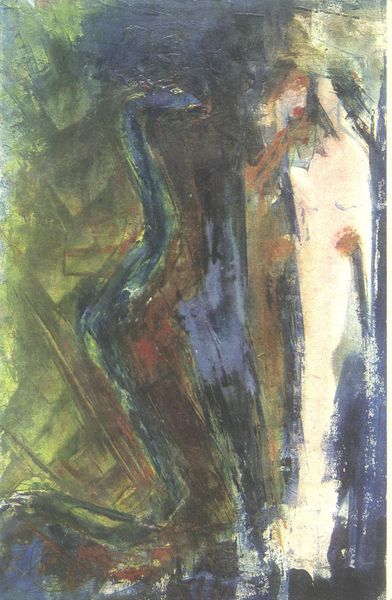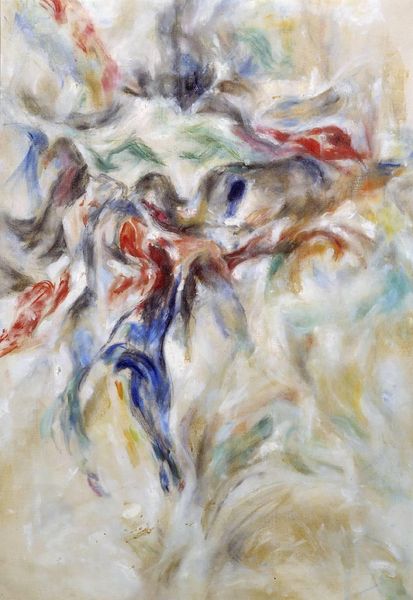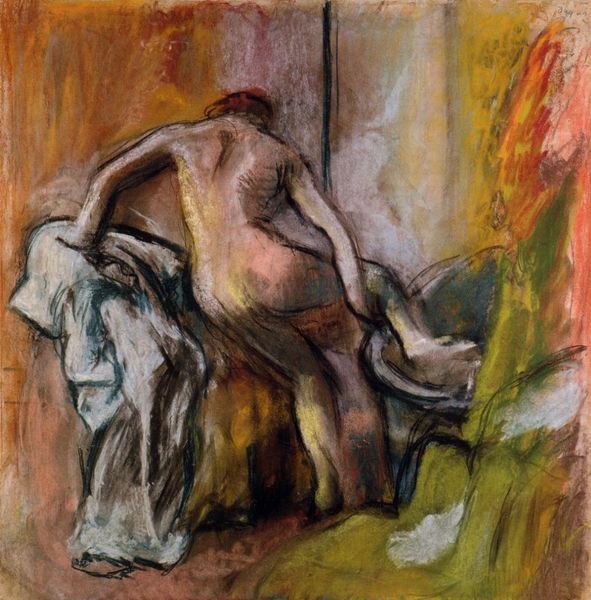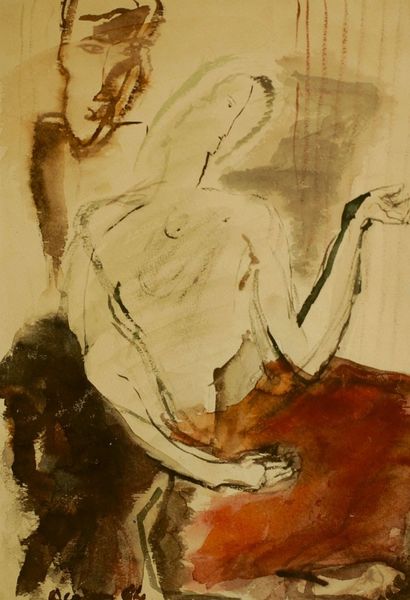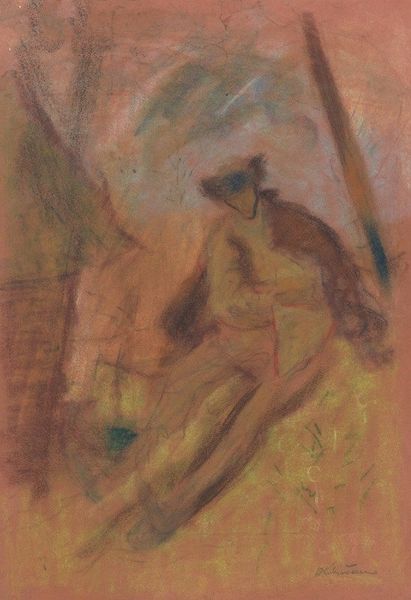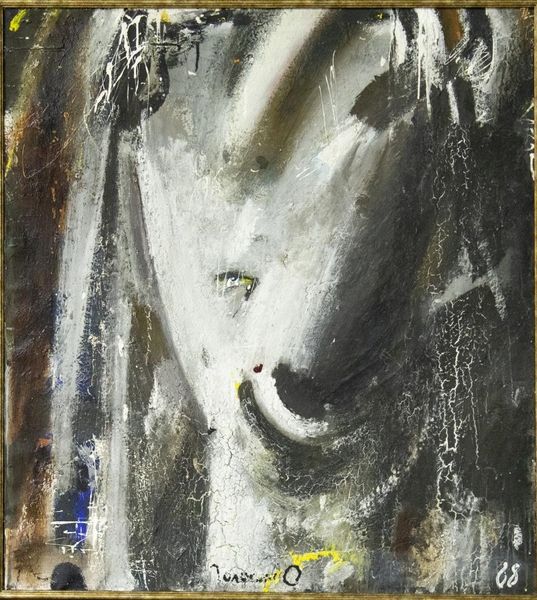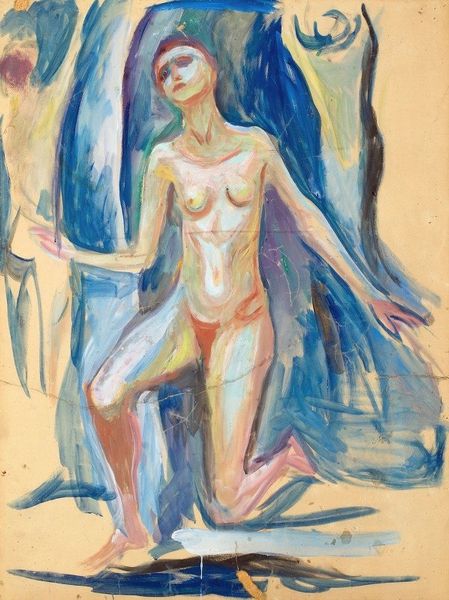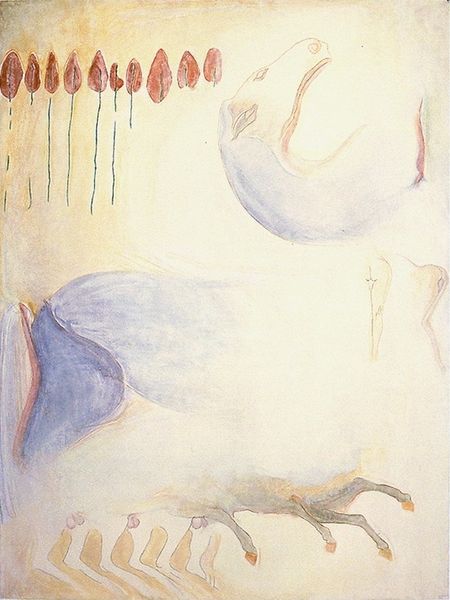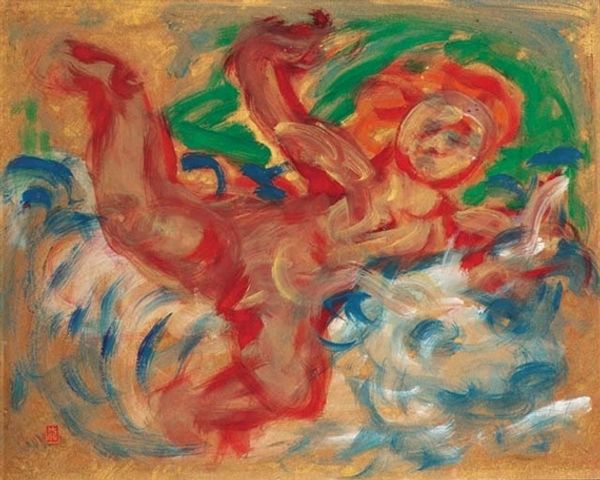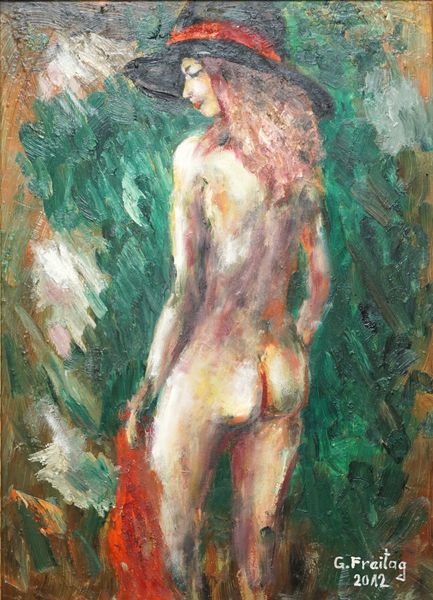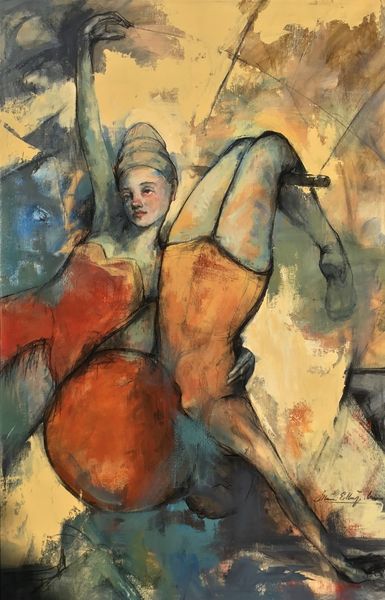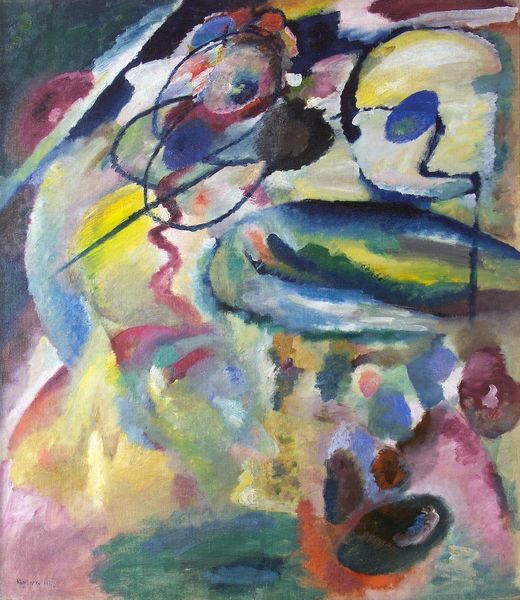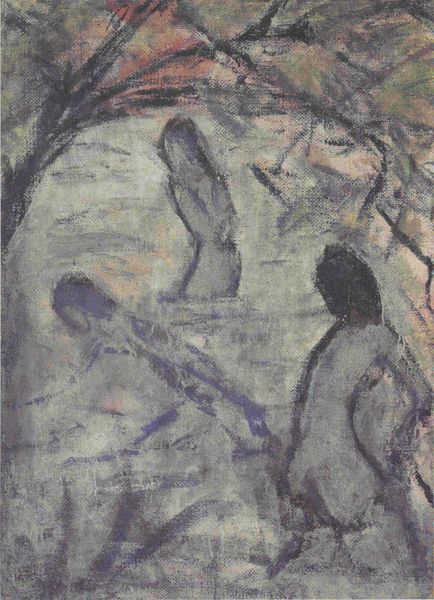
Copyright: Margareta Sterian,Fair Use
Editor: This is Margareta Sterian's "Illustration for V. Voiculescu's 'Last Shakespearean Sonnets'" from 1982, an oil painting with a distinctive abstract-expressionist feel. The paint looks quite thick in places, almost sculptural. What stands out to me is how the figure seems to be emerging from, or perhaps dissolving into, the background. What do you see in this piece? Curator: I see a profound engagement with materiality and process, reflecting the social and economic realities of art production during the late communist era in Romania. Consider the availability of materials; perhaps the heavy impasto speaks to a resourcefulness, a way of making the most of what was on hand, imbuing the work with a tangible, almost defiant presence against a backdrop of scarcity. The title suggests an engagement with Shakespeare, so I'd also ask you: What’s the implication of intertwining high literary allusion with such demonstrative materiality, and to what effect? Editor: I suppose it merges 'high art' with everyday material. Could this be a statement about art being for everyone, despite the restrictive socio-political context of the time? Or a pushback against purely conceptual approaches that minimize the handmade? Curator: Exactly. Think about the labor involved in creating such a textured surface. Each stroke, each daub of paint represents a deliberate act, a physical assertion of creativity within a system that often sought to control and commodify labor. Does the work suggest, to you, the artist celebrating creative expression over conventional representation? Editor: Yes, definitely. It’s less about illustrating the sonnet literally and more about conveying its emotional and textural essence through the act of painting itself. The impasto, almost fighting against being 'just' paint, really drives that home. Curator: And remember, the very act of creating and possessing this piece can be seen as a form of resistance, a quiet rebellion expressed through the very materials at hand and the skills put to use. It challenges traditional boundaries between the intellectual and manual labor of art making. Editor: I see now! So the materials and how they were applied aren't just aesthetic choices, but carry deeper cultural and social meaning, and can represent subversive intentions. Thanks for this new perspective. Curator: It’s by examining process that we unearth profound insight. Now you can look more meaningfully at the artistic creation, instead of a simple understanding of its topic!
Comments
No comments
Be the first to comment and join the conversation on the ultimate creative platform.
